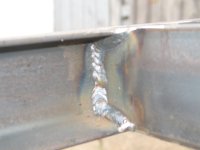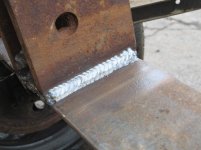Shield Arc
Super Member
slow your wire speed down to the point it would be unorthodox to use, but yet steady. This is a very slow process of mig welding. Prob about 5in per minute, just as a referance
REALLY? What good is that? I thought the idea behind Mig was to be fast?
I'll try your way tomorrow morning. I was just setting here thinking, I should have tried it like 6010, with a whip back and forth motion.









